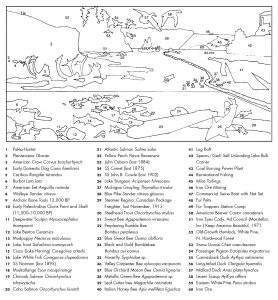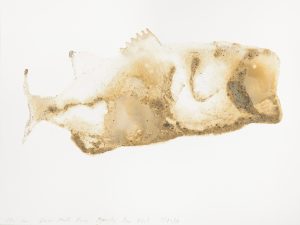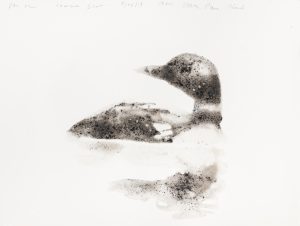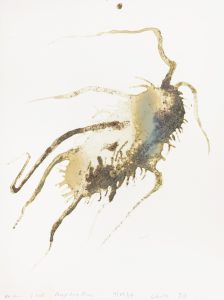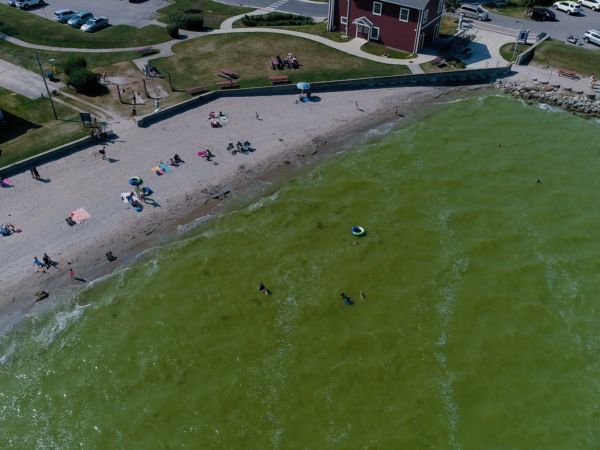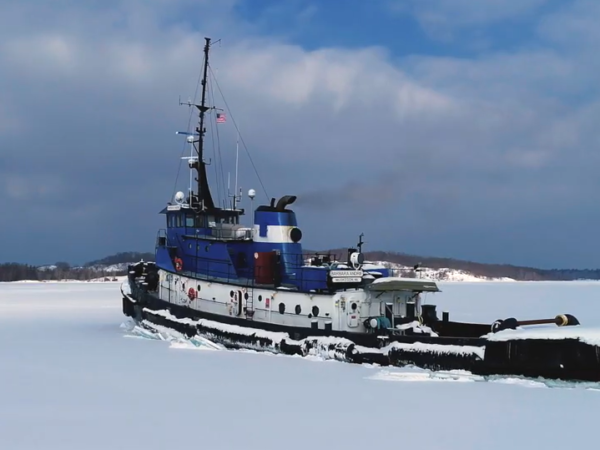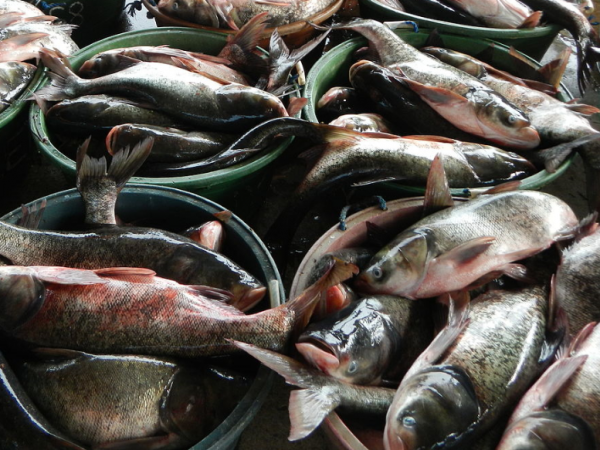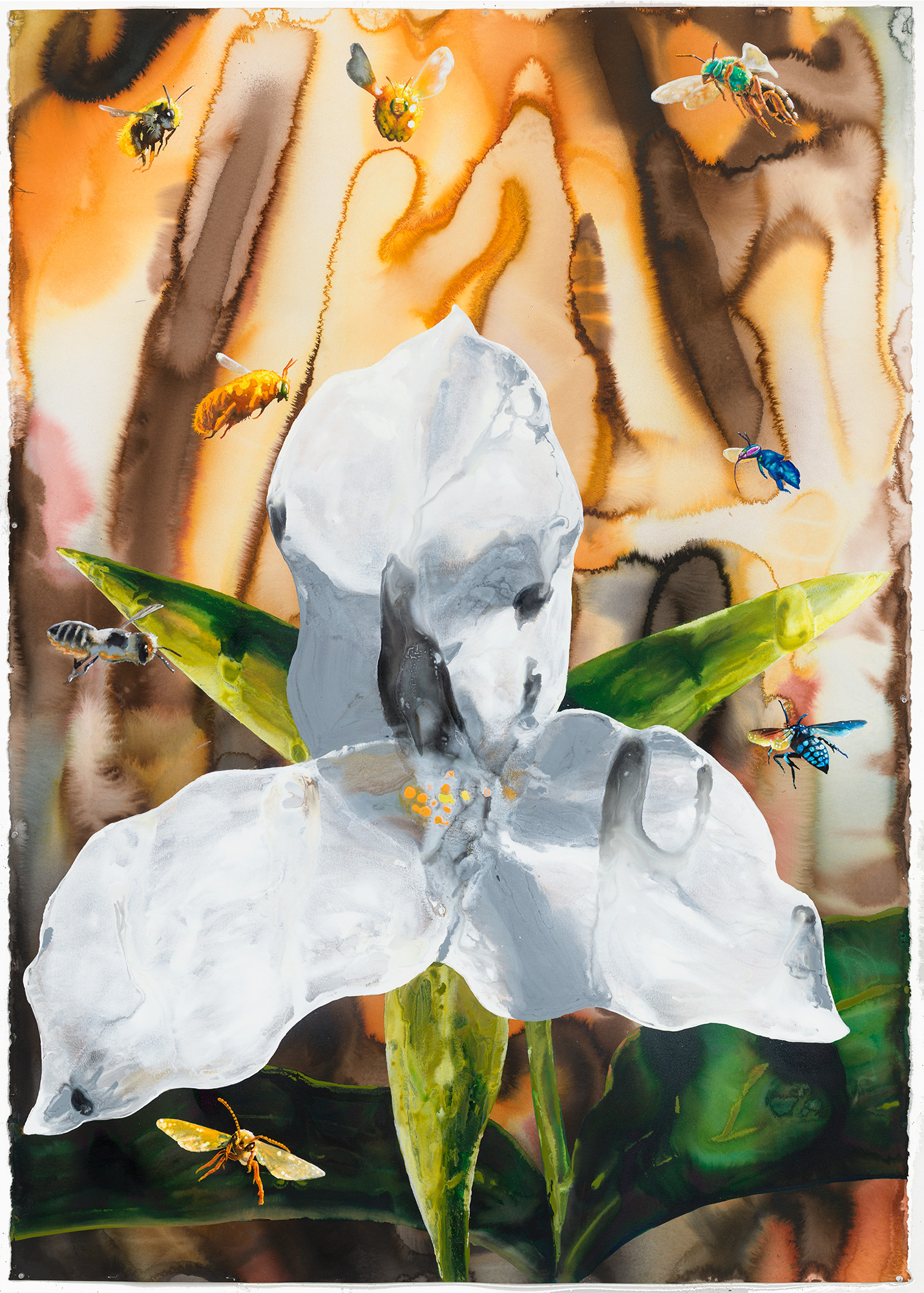
An interview with artist Alexis Rockman
-
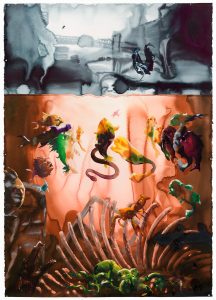
Bubbly Creek
Bubbly Creek, 2017. Watercolor, ink, and acrylic on paper, 73 ½ x 52 inches. Courtesy of the Artist and Sperone Westwater, New York.
-
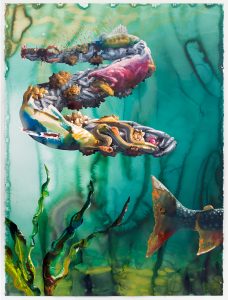
Chimera
Chimera, 2017. Watercolor, ink, and acrylic on paper, 73 3/8 x 52 inches. Courtesy of the Artist and Sperone Westwater, New York.
-
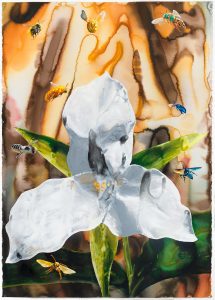
Trillium
Trillium, 2017. Watercolor, ink, and acrylic on paper, 74 x 52 inches. Courtesy of the Artist and Sperone Westwater, New York.
If your ideas of Great Lakes paintings are beautiful sunsets, seagulls, sailboats and sand dunes, this exhibition which begins at the Grand Rapids Art Museum in Michigan and then travels to five other cities will be a surprise.
Alexis Rockman: The Great Lakes Cycle is a comprehensive look at the Great Lakes that combines art with science and challenges viewers with paintings that communicate both rigorous scientific knowledge and sublime beauty.
Artist Alexis Rockman brings wide ranging content to his work, and his own long-term interests in science, the environment and wildlife consistently inform his projects. In this exhibition, he offers impressions of the Great Lakes that are at times bleak and brutally disturbing, and at other times playfully beautiful, delighting in the pleasures of this visually spectacular ecosystem.
Five new mural-sized paintings anchor the exhibit, and each one explores a threat to the Great Lakes. Thirty field drawings and six large-scale watercolors accompany the paintings.
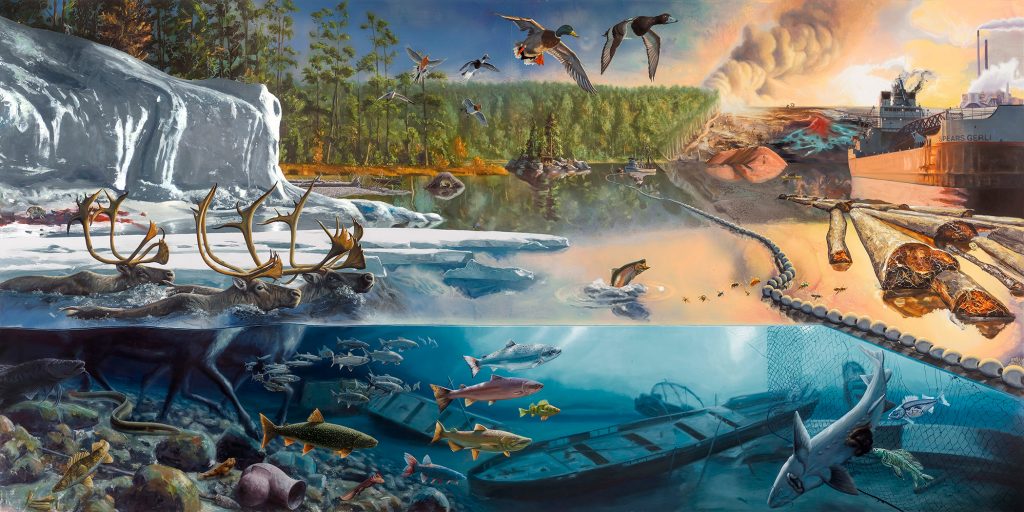
Cascade, 2015. Oil and alkyd on wood panel, 72 x 144 inches. Commissioned by Grand Rapids Art Museum with funds provided by Peter Wege, Jim and Mary Nelson, John and Muriel Halick, Mary B. Loupee, and Karl and Patricia Betz. Grand Rapids Art Museum, 2015.19
Rockman’s artwork has been shown at many international solo and group exhibitions, including a major retrospective at the Smithsonian American Art Museum. His work is in public and private art collections around the world, and he has also taught at Columbia University and Harvard. Rockman was also hired to produce visual underwater images for the Academy Award- winning movie “Life of Pi.”
After the show in Grand Rapids from January 27th to April 29th, the exhibit travels to Chicago, Cleveland, Milwaukee, Minneapolis and Flint.
Detroit Public Television’s Great Lakes Bureau talked with the artist about his research of the Great lakes and what inspired this exhibit.
Here are some excerpts from my interview with artist Alexis Rockman.
GLB: Where were you born and raised?
AR: Manhattan, on the Upper East Side. I loved going to the Bronx Zoo and the Museum of Natural History and I started collecting pets when I was a kid. I loved animals, and my mother and stepfather encouraged that. I became more and more interested in animals and I especially loved reptiles and amphibians. And, of course, I loved dogs and cats. And as I got older, I sort of combined my interest and my love of natural history with movies and production design. I remember painting landscapes on the glass behind habitats I was creating, and even recreating some of my favorite movie scenes on glass from King Kong, and I remember putting a giant tree frog in front of King Kong. It seemed like a natural progression.
GLB: You were involved in movies and set design while also pursuing a career as a painter. The director Ang Lee hired you to do visual design for his move “Life of Pi” where you created what were referred to as “freaky biological fantasies” living in the water where the story takes place. How did you connect with the Grand Rapids Art Museum director and the curator of the exhibition, Dana Friis-Hansen?
AR: We had worked on several projects in other cities and I’ve known him for more than 20 years. I worked with him in the late 80’s when he was a curator at MIT. I did a project with him in Japan in the early 90’s. He sent me an email and told me he was in Grand Rapids and said he wanted to do an ambitious project with me. He asked me if I had any ideas. I looked at the map and I realized Grand Rapids is right on the Grand River which empties into Lake Michigan. And I said, “You know, the Great Lakes is a fascinating regional area that has global implications.” I suggested doing something very ambitious. I told him that I wanted to do five very large paintings, six very large works on paper, and some field drawings. But I told him I needed to read a bunch of books and take a series of trips around the Great Lakes to get a better sense of what I was dealing with.
GLB: Where did you travel in the Great Lakes Region?
AR: I asked the museum to develop an itinerary – Julie Conklin especially did a great job. My fantasy was to rent a car, leave Grand Rapids, drive an hour and a half north, meet with historians, get a history on ship wrecks and light houses, meet with fisherman and anybody that was interesting, experts on wildlife, too—and meet with as many people as I could who had relationships with all the Great Lakes.
GLB: You had never seen the Great Lakes before you travelled here to do your research. What was your first impression?
AR: It surprised me how much they are like an ocean. But they’re in worse shape than I thought.
GLB: Explain.
AR: First of all, they LOOK great on the surface! But there are so many problems beneath the surface. It’s such a tragic, almost comically tragic, scenario of what happened to the Great Lakes. Every generation has its own debacle and mistakes. It’s very sad, the shape they’re in.
GLB: What are some of the problems you first became aware of as you researched the Great Lakes?
AR: Pollution, of course. Microbeads. Plastic. But invasive species are probably one of the most frightening problems right now. Species are going extinct. The Great Lakes have been overfished. The Lakes have been over-exploited by humans. And there are indirect things like run-off from agriculture that are destroying the lakes.
GLB: You have an awesome painting of a lamprey in this show. Did you meet one?
AR: Yes, I picked one up. It was muscular! It was a small one, but I could feel how powerful it was.
GLB: Tell me about the rest of your paintings in this upcoming show at the Grand Rapids Art Museum.
AR: Each painting deals with an issue that the lakes have had to struggle against. For instance, Pioneers is a painting that not only deals with the first wave of immigrants—not unlike the first humans that arrived—but also the opportunistic and relatively recent freeloaders that got sucked up in to ballasts in cargo ships from all over the world. Those drops of water in those ships contain thousands of eggs and larvae, and once they’re dumped in the Great Lakes, they take advantage of this virgin landscape: round gobies, bloody-red shrimp, rusty crayfish—the list goes on and on.
GLB: How did you structure your approach to this show?
AR: First, I make a list of what I want to be in the paintings and figure out what they are, and that has to do with words. I sat down with a wonderful professor named Dr. Jill Leonard at Northern Michigan University, who is an ecological generalist. She knows a lot of things about the Great Lakes. I made five boxes, five rectangles, and I said, “Ok, what are the issues?” So, we decided together it would be Pioneers, Cascade, Watershed, Spheres of Influence and Forces of Change—a lot of issues that the lakes have had to deal with at different times in their life cycles and stages of their lives. Obviously, Lake Erie and Lake Ontario are in far worse shape than any of the other lakes. That’s because they’re the shallowest and smallest and have the most proximity to the East where the invaders ostensibly come from. But you go west, and Lake Superior has the most water and is the coldest and is in the best shape. But it will still have to deal with these issues sooner or later.
GLB: What is your intent with this show?
AR: My intent is to make a compelling painting or project. I’m fascinated by these ideas. I don’t have any illusions about what’s possible. The machinery of capitalism is far too powerful to let art get in its way! My life’s work has been to immerse myself in what’s happening and cope with that through these paintings and drawings.
GLB: This show will be travelling to several museums throughout the Great Lakes. Will each one be different?
AR: I think when the work shows up at each museum, it will have a different footprint. It will reflect each region and each lake in a different way at each of the five venues that have been planned so far.
GLB: Anything else you’d like to say about what you’ve learned about the Great Lakes in the process of creating this show?
AR: The Great Lakes are a vulnerable ecosystem that is incredibly precious and it will be even more precious than gold in the future as freshwater becomes more and more scarce. And not only should the water be conserved, but the things that are living in it that are left have to be taken care of.
For more information about Alexis Rockman: The Great Lakes Cycle at the Grand Rapids Museum of Art which begins January 27th, go to http://www.artmuseumgr.org/2017/04/03/alexis-rockman-the-great-lakes-cycle/


